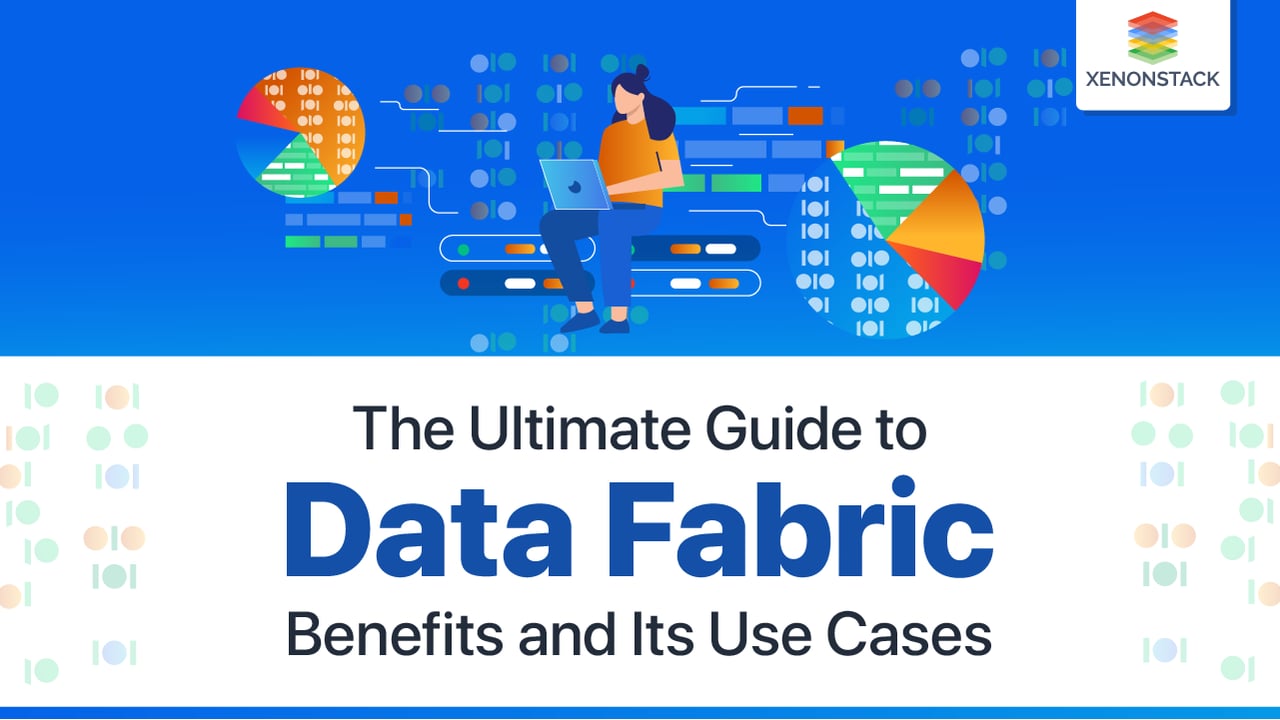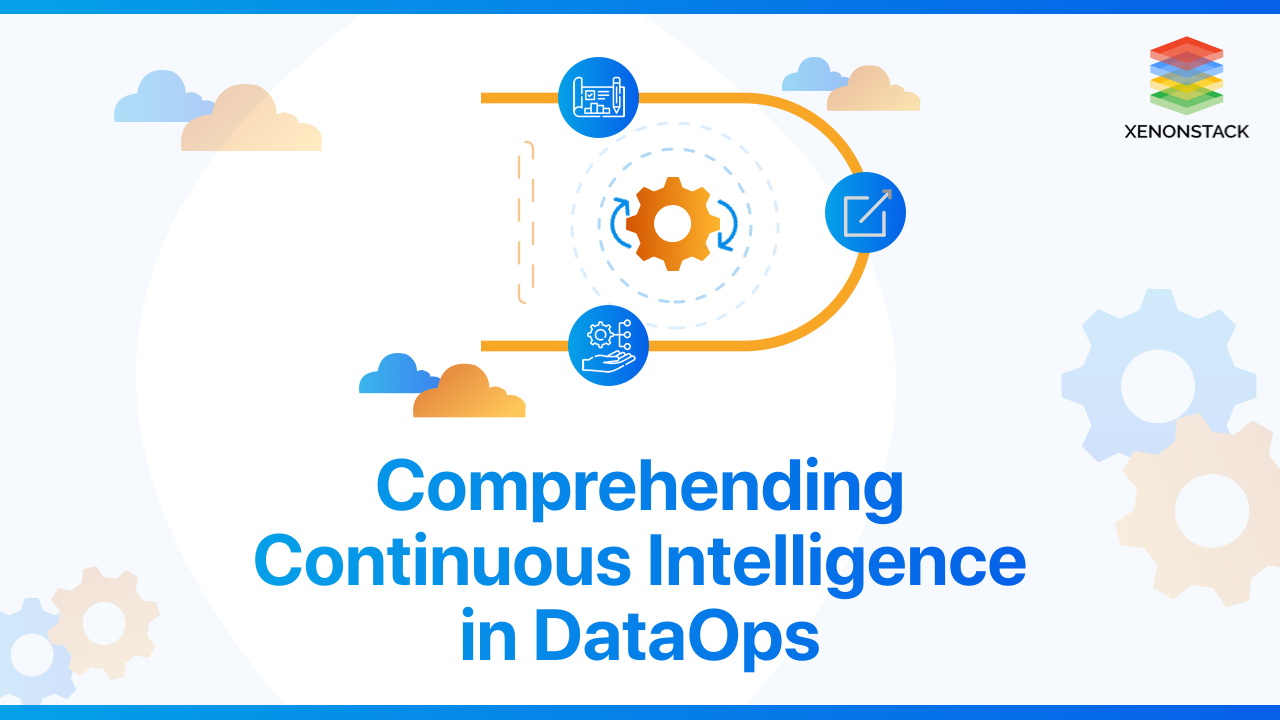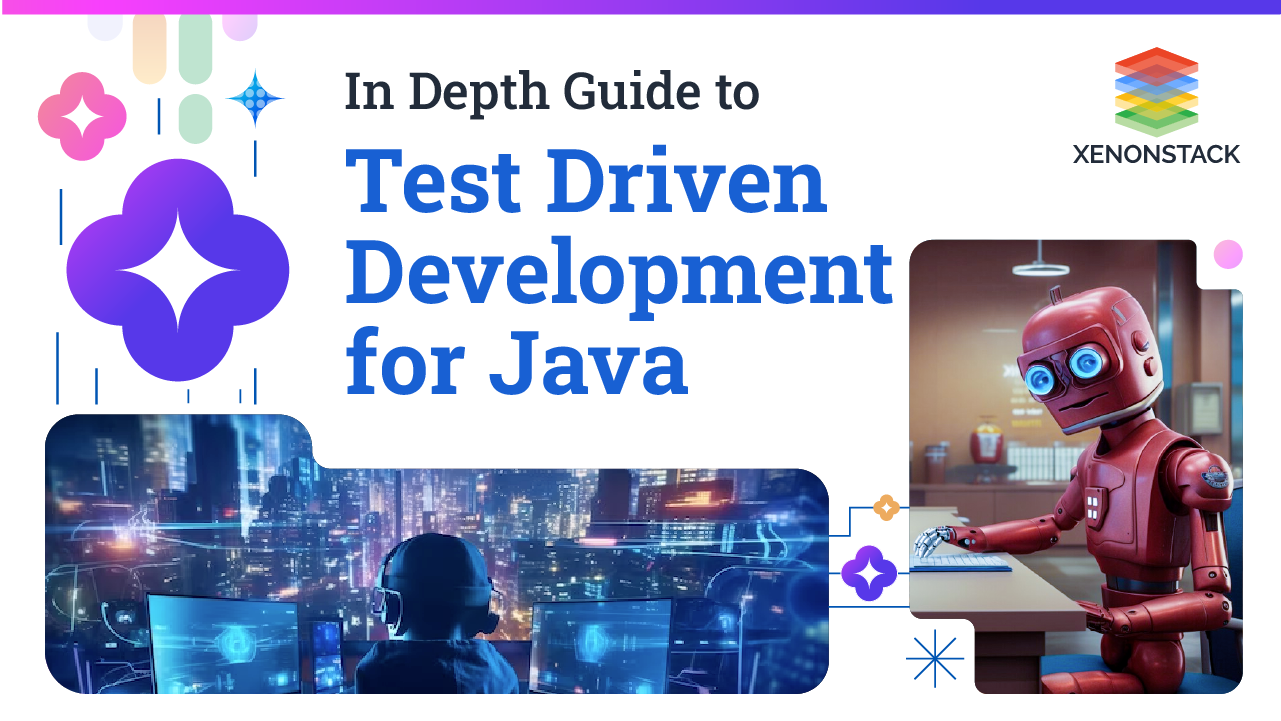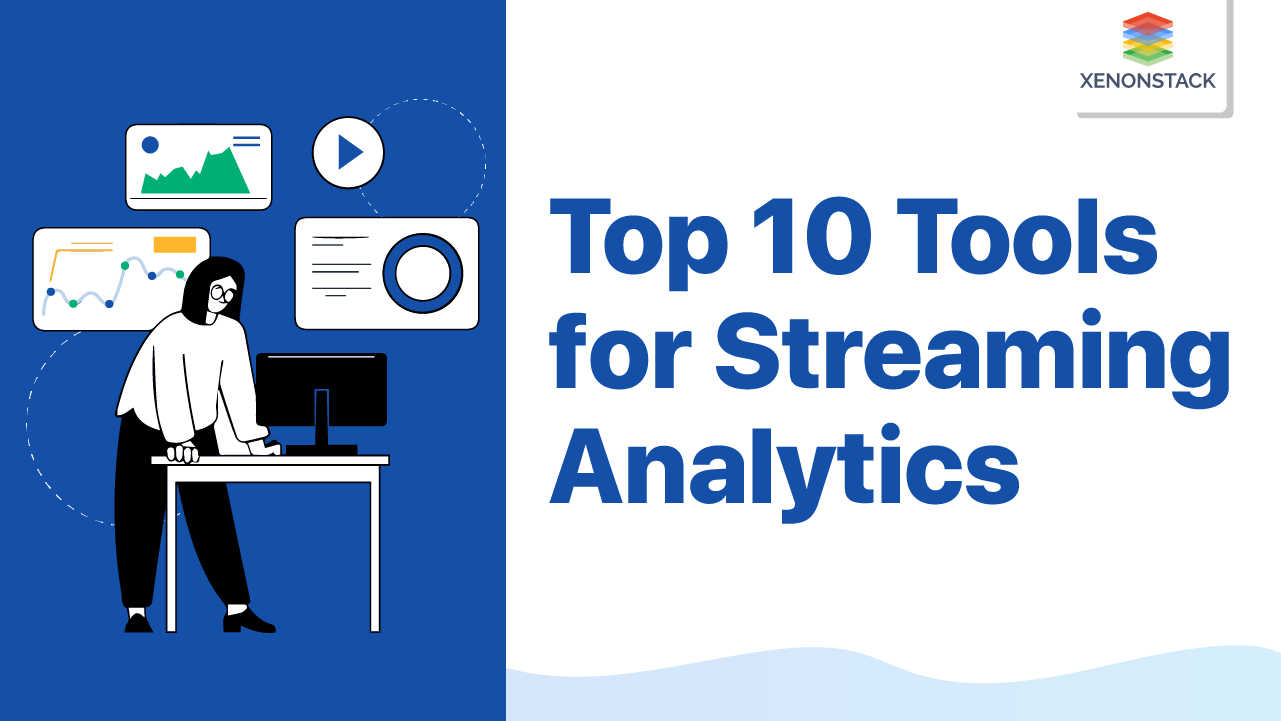
Introduction to Data Fabric
Insight-driven companies have an advantage over others. They are growing on average by over 30% each year. Given this pattern, modern enterprises are becoming data-driven organizations looking to derive more business value from their data. But with the rise of the cloud, the emergence of the Internet of Things (IoT), and other factors, data is no longer confined to on-premises environments.
In addition, there is a large amount of data, many data types, and multiple storage locations. As a result, managing data is more challenging than ever. Using a data fabric is a feasible strategy to help organizations overcome the barriers that previously made it difficult to access and process data in distributed data environments, which allows businesses to manage ever-growing data more efficiently.
The process of storing, and analyzing the huge set of information on various data stores. Taken From Article, Big Data Challenges and Solutions
What is a Data Fabric?
A data fabric is a composable, flexible, and scalable way to maximize the value of data within the organization.
It helps companies manage large amounts of data stored in different data types in other locations. Ensure consistent data access, enable self-service and governance, and automate data integration processes. Using intelligent and automated systems, it facilitates end-to-end integration of disparate data pipelines and cloud environments.
How does Data Fabric work?
The most common data stacks include cataloging, analytics, and modeling capabilities built on centralized stores such as data warehouses, data lakes, and data lakehouses. These can also provide great value but can feel sluggish when dealing with ever-increasing data.
Such drawbacks are:
- Data Silos: Data-intensive approaches require moving data to central storage, leading to many problems. Data transfers are often subject to data hosting and privacy policies, which take time to comply with and can significantly slow down data processing and analysis.
- Replication: Maintaining data consistency across all repositories are complex means; also, storing copies of the same data requires more disk space.
- Latency: In a centralized approach, data is loaded from various sources to a central repository. As the amount of data increases, it takes longer to move and delays the system. Using the data fabric model avoids all of these problems.
Working
An essential advantage of using data fabrics is that no data is shifted within this model. Connect data from different sources, process them, and prepare them for analysis. Data fabrics also enable dynamic linking and interaction with new data, which can significantly improve the speed of data processing and analysis.
Big Data architecture can handle the processing, ingestion, and analysis of data that is too complex or large for traditional database systems. Taken From Article, Big Data Architecture Layers, Patterns and its Features
Key Pillars of a Comprehensive Data Fabric
A data fabric comprise components selected and collected in various combinations. Therefore, data fabric implementations can vary significantly. Let's look at the main elements of the data fabric.
Augmented Data Catalog
It provides access to all kinds of metadata through a well-connected knowledge graph. It also graphically displays existing metadata in an easy-to-understand format and establishes unique relationships. An advanced data catalog forms the semantic business layer of data fabrics and uses machine learning to relate data assets to organizational terms.
Persistence Layer
Persist data dynamically across various relational and non-relational models based on the use case.
Active Metadata
It allows data fabric to collect, exchange, and analyze all types of metadata. Active metadata includes metadata that records the ongoing use of data by the system and users, except passive metadata (theme-based and runtime metadata).
Knowledge Graph
It visualizes the connected data environment with uniform identifiers, flexible schemas, and more. Knowledge graphs help to understand data fabric and make it searchable.
Insights and Recommendations
Engine It builds reliable and robust data pipelines for operational and analytical use cases.
Data preparation and Delivery Layer
It takes data from any source and delivers it to any destination using any method, including ETL (bulk), messaging, CDC, virtualization, and APIs.
Orchestration and Data Operations
This component coordinates the work of all phases of the end-to-end workflow with data. One can use it to decide when and how often to run pipelines and how to control the data produced by those pipelines.
What are the benefits of using Data Fabric?
The key benefits of the data fabric model are below:
- Efficiency Data fabrics can aggregate information from previous queries, allowing the system to scan aggregated tables instead of raw data on the backend. The data fabric dramatically reduces query response times, allowing an organization to respond quickly to essential questions.
- Democratization The data fabric provides data virtualization, enabling organizations to implement seamless access to data while democratizing it. When an organization adopts a data fabric architecture, business users can access data with minimal IT involvement, creating an environment that makes accessing and sharing data faster and easier. A well-constructed logical data fabric centrally provides the necessary security and data management.
- Scalability Data Fabric is a durable and scalable solution for managing all the data in a single environment. It offers excellent scalability for data, data sources, and application growth.
- Integration Data fabric integrates data from multiple sources, cleans that data to ensure consistency, and analyze and share authoritative data with stakeholders.
- Control The data fabric provides broad access to and use of data within the same organization, enabling useful predictions and improved system performance.
- Agility A data fabric can virtualize enterprise data access and enable information agility. It can also combine queries with external data sources such as other databases, web services, and files to perform queries without costly data movement.
An architecture that runs technologies and services to assist a corporation in managing its data. Taken From Article, Data Fabric Vs Data Mesh
Use Case of Data Fabric
Data Fabric is a partial solution, but it dramatically reduces the work required to maintain the required compliance.
Enhancing Machine Learning Models
Machine learning (ML) models are better able to learn when they are fed the correct data in a timely manner. ML algorithms can monitor data pipelines and recommend appropriate relationships and integrations. These algorithms extract information from the data while it is connected to the data structure, look at all business data, examine that data, and identify appropriate connections and relationships.
Providing data is one of the most time-consuming elements of training an ML model. The Data Fabric architecture helps use ML models more efficiently by reducing data preparation time. It also helps improve the usability of prepared data across applications and models. As companies distribute data on-premises, in the cloud, and IoT, the data structure provides controlled access to secure data and improves ML processes.
Forming Holistic Customer Views
Organizations can adopt Data Fabric to leverage data from customer activity and understand how customer interactions add value. This includes integrating real-time data from various sales activities, customer onboarding time, and customer satisfaction KPIs.
A Data Fabric architecture allows correlating of disparate data sources to improve analysis, provide valuable recommendations and gain a 360-degree view of customer data across all touchpoints, including interactive voice response (IVR), self-service portals (mobile or web), customer relationship management software (CRM), service chatbots, field technicians, and more.
Enhancing Enterprise Efficiencies & Intelligence
Data Fabric can mean the difference between success and failure for an organization. This unique data management ecosystem offers a range of benefits, including flexibility, scalability, security, real-time analytics, and advanced analytics, all in one place.
Data Fabric architecture streamlines the integration of information from internal and external sources and provides a bird's eye view of your business with drill-down and drill-through capabilities. This improves the use of self-service dashboards and provides an overview of last quarter's company-wide sales. Sales managers can see a sharp drop in sales last month and determine why with just a few clicks. It enables a business user to analyze business performance, identify departments, teams, or employees with the highest and lowest KPIs, and perform a risk analysis and detailed budgets without contacting the IT team.
It also makes it easier to implement process mining projects. This makes perfect sense for companies that span multiple applications.
Enhanced Data Security
Organizations are constantly looking for new ways to provide self-service data access for large numbers of users and strengthen data security controls across the enterprise. Traditional data security practices such as dynamic data masking, end-to-end data encryption, and fine-grained data access controls have proven sufficient.
Still, the data fabric also enables AI-driven enforcement of data governance policies. The most important aspect of implementing a data fabric is improving data security, getting the best of both worlds, i.e., broad data access and enhanced privacy. It has more data governance and protection capabilities with a unified data structure. Engineering and data security teams can access data based on user permissions while simplifying encryption and data masking procedures.
Increased Data Quality
According to various studies conducted by reputable institutions, the economic impact of fraudulent data can hurt a company's revenue by up to 30%. Lost sales opportunities due to inaccurate customer records, inaccurate credit score calculations due to incorrect data entered into ML algorithms, overpayment of employees due to incomplete and disorganized payslips, etc., are just a few of the possible consequences. Data Fabric addresses these challenges by integrating AI and ML capabilities to improve data quality continuously.
Streamlining Triggered Actions And Predictions
Organizations can use the Data Fabric Architecture to configure, train, and deploy predictive algorithms and trigger actions on various enterprise application endpoints. These include everything from audit compliance to security traceability and revenue-generating events such as ad optimization, marketing, customer retention, cart abandonment actions, organized sales, and more.
Data Fabric helps abstract dependencies on APIs, allowing data to be used across different systems without knowing the source systems or their connection. As Data Fabric grows, the composable design makes it easy to reuse data models across applications, helping you start quickly with initial development.
According to many experts, a data fabric architecture could completely change the foundation of how an organization learns from past experiences and evolves.
Difference between Data Fabric, Data Warehouse, and Data Lake
Before this, let's understand how data storage has evolved.
Data Warehouses
- Data Warehouses are ideal for storing structured data and presenting data in an aggregated and summarized form for data analysis.
- However, it doesn't work with unstructured data, which makes up most of the data collected. One of the reasons so much data is unused is that 80% to 90% of this collected data is unstructured and doesn't conform to traditional data models. Data Lake.
- A data lake makes it easy to work with all kinds of data, including structured and unstructured data, and even store data from disparate sources.
- Data lakes store and maintain replicas of data, but they don't support real-time data, which can result in slow response times for some queries.
- A data lake can also be a data dump (a so-called "data swamp") containing unusable data, which can limit practical analysis.
Data Fabrics
- Data Fabrics overcome these obstacles by providing uniform access to processed data while maintaining localized or distributed storage, which also helps data lineage.
- It is not a copy of the data source but a specific data set with a known and approved state.
- A data fabric architecture can work with data warehouses, lakes, and other data sources.
Conclusion
One should use data fabrics if an organization needs a centralized platform to access, manage, and control all its data. The first step is to design a framework that makes sense for that organization. The next step is implementation, providing a platform that consolidates all metadata, including context, into a single repository.
- Explore about Big Data Security Tools and its Management
- Read here about Big Data Platform


